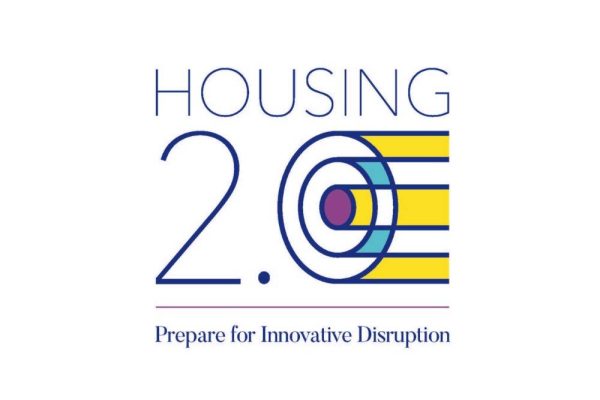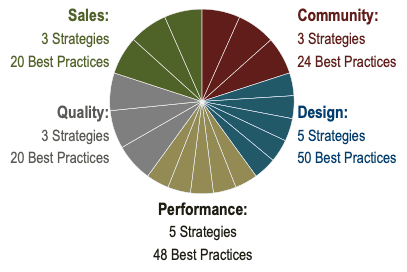Guest Blog Post By: Sam Rashkin, Housing 2.0
Consider the following six related facts:
- Our planet is too big to fail.
- Carbon emissions are driving our planet perilously close to failure.
- Buildings account for approximately 40% of all global carbon emissions.
- A substantial reduction of carbon emissions relies on high-performance building professionals becoming industry leaders.
- Industry leadership is substantially correlated to user experience (UX) based on extensive data showing 3X greater financial return and 3X greater resilience for UX leaders vs. UX laggards.
- Ergo, it’s critical that high-performance housing professionals become UX leaders.
Hoping this train of thought is incredibly logical, I’d love to invite you to a unique full-day pre-conference workshop at Coverings 2024 in Atlanta on April 23. The curriculum is based on my new book, “Housing 2.0: A Disruption Survival Gude.” At its core is a framework for consistently delivering industry-leading UX (see figure below) that can position you to become an industry leader. By attending, you’ll learn:
- Why Disruption is Looming Ahead for Housing: Future Readiness Matters
Extensive data reveals there are five crises converging on the housing industry and imposing brutal pain. Meanwhile, four innovations are market ready to relieve that pain with better homes for lower cost. The future with certainty is just a matter of connecting the dots. - 24 Best Practices for Optimizing the Community UX: Place Matters
It’s intuitive that where you live matters. There is a reason for the universal mantra among real estate professionals, “location, location, location.” Thus, it should be obvious you can’t get this wrong. Yet, it is stunning how many proven best practices for delivering a great community experience are consistently missing from new developments. - 60 Best Practices for Optimizing the Design UX: Space Matters
In the product world, we all know that design usually trumps other attributes when engaging consumer interest. This is even more crucial with the ultimate consumer product, “homes.” Nothing comes close to it in size, cost, emotion, risk, and transaction complexity. It is tragic to Ignore the power of design because best practices that can leverage substantial cost savings by minimizing waste, complexity, and excessive customization while optimizing system integration. - 48 Best Practices for Optimizing the Performance UX: Protection Matters
High performance is a must-have UX. Besides helping to save the planet, it provides homeowner protection from high utility bills, moisture-related maintenance expenses, health problems, uneven comfort, excessive noise, prevailing disaster risks, and water scarcity in drought-prone regions. Admittedly homebuyers get most excited about location and design when looking for new homes (see prior paragraphs). But once they move in, home performance experiences can become the dominant priority. Ask anyone with rapidly increasing utility costs, chronically sick children, a wet basement, or cold floors. - 20 Best Practices for Optimizing the Quality UX: Excellence Matters
Builders cannot afford a crisis of confidence with homebuyers making the largest purchase of their lifetimes. And nothing instills a lack of confidence as effectively as construction defects and shoddy materials and components. Yet, as I frequently survey my audiences with the question, “what does ‘builder grade’ mean,” I always get the same resounding response shouted back, “cheap!” I’m baffled wondering how an industry that sells the ultimate consumer product can be complacent with a common consumer perception that builders left to their own devices would always choose the lowest quality option. It is critical builders build a reputation for excellence by delivering a compelling quality experience. - 20 Best Practices for Optimizing the Sales UX: Trust Matters
Yes, sales is an experience. And I’ll go on to suggest it may be the experience with the greatest opportunity for improvement among builders. This includes extensive observations that a compelling “why” value proposition is too often missing in action, the added value of invisible features like high-performance measures are not effectively translated, substantial additional value is not backed up with warranty coverage, and minimal services are offered after the sale including many opportunities for ongoing builder revenue. Every new homebuyer should be an automatic addition to each builder’s sales force providing referrals, positive reviews, and testimonials. That doesn’t happen without trust.
I know the topic of UX leadership is substantially out of the mainstream for high-performance professionals. However, Americans spend 70 percent of their lives in their homes. Home is where life happens. The housing market can only fully transform to high performance if we deliver a comprehensive optimized UX. Without a doubt, high-performance is a must-have UX … but it’s not enough … not nearly enough. Let me suggest that homes where life happens better are good for business. I’d love to have you join us.
REGISTER TODAY!
To learn more about Housing 2.0, visit the Housing 2.0 microsite.



